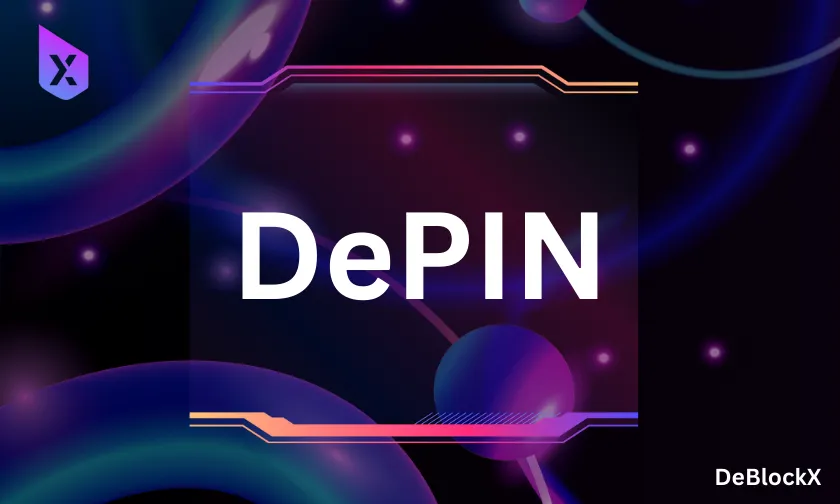Exploring DePIN: The Future of Decentralized Physical Infrastructure
The world is on the verge of another technological revolution, driven by the convergence of blockchain, decentralized networks, and physical infrastructure. This emerging paradigm, known as Decentralized Physical Infrastructure Networks (DePIN), is set to redefine how we build, manage, and interact with real-world assets. From smart cities to decentralized energy grids, DePIN promises to transform the future of physical infrastructure. But what exactly is DePIN, and why is it poised to revolutionize the way we connect the digital and physical worlds?
What is DePIN?
DePIN refers to the integration of decentralized networks with physical assets and infrastructure, creating systems where ownership, control, and decision-making are distributed across participants. Unlike traditional centralized models, where governments or corporations typically control infrastructure, DePIN operates through decentralized protocols. It leverages blockchain technology, smart contracts, and token-based governance to allow multiple stakeholders to collaborate in managing physical infrastructure.
For example, imagine a decentralized energy grid where individuals and businesses can generate renewable energy, store it in decentralized networks, and sell excess power back to the grid — all without the need for centralized intermediaries. This is the core principle behind DePIN: breaking down traditional silos and creating shared ownership models for physical infrastructure.
The Intersection of Blockchain and Physical Infrastructure
The rise of blockchain technology has been primarily associated with digital assets and decentralized finance (DeFi). However, its potential to extend beyond the virtual realm and into the physical world is now being realized through DePIN. By utilizing the transparency, immutability, and decentralized nature of blockchain, physical infrastructure projects can achieve greater efficiency, accountability, and inclusiveness.
One of the key innovations enabling DePIN is tokenization. By tokenizing physical assets — whether it’s real estate, energy resources, or data generated by smart devices — DePIN allows for fractional ownership and seamless transfer of value. Participants in DePIN networks can contribute resources, such as energy or bandwidth, and receive tokens that represent their stake in the network. These tokens can then be traded or used within the ecosystem, creating a new form of economy based on real-world infrastructure.
Key Applications of DePIN
1. Decentralized Energy Grids
One of the most promising applications of DePIN is in energy distribution. Traditional energy grids are centralized, highly regulated, and vulnerable to disruptions. DePIN enables the creation of decentralized energy networks where individuals and companies can generate, store, and trade energy using peer-to-peer systems.
Blockchain technology ensures transparency in energy production and consumption, while smart contracts automate the buying and selling of energy. This model reduces reliance on centralized energy providers, promotes renewable energy sources, and encourages innovation in storage technologies.
2. Smart Cities and IoT Networks
Smart cities are another area where DePIN is expected to play a transformative role. By integrating decentralized infrastructure with the Internet of Things (IoT), cities can become more efficient, sustainable, and resilient. Sensors, cameras, and smart devices scattered across a city can generate data related to traffic, energy usage, water supply, and more.
Through DePIN, the data generated by these devices can be securely shared and managed by the community rather than centralized authorities. Token incentives can be used to reward individuals or organizations that contribute valuable data, while decentralized networks ensure the data remains tamper-proof and transparent.
3. Decentralized Telecommunications
Telecommunications infrastructure, such as internet connectivity and mobile networks, is traditionally controlled by large corporations. However, DePIN enables the creation of decentralized telecommunication networks where users can share bandwidth and computing resources.
Helium Network, for instance, is a DePIN project that allows individuals to deploy wireless hotspots and provide low-power, long-range connectivity for IoT devices. In return, they receive cryptocurrency rewards. This model not only reduces costs but also extends internet access to remote and underserved areas.
4. Autonomous Transportation Networks
As autonomous vehicles and drones become more prevalent, the infrastructure to support them will also need to evolve. DePIN-powered transportation networks can enable decentralized coordination between self-driving cars, drones, and other smart mobility solutions. By leveraging blockchain for trustless interactions and tokenized systems for resource allocation, DePIN could make transportation systems more efficient and scalable.
For instance, decentralized ride-sharing platforms could allow drivers and passengers to connect without the need for intermediaries like Uber or Lyft. Token-based governance could ensure that the network remains fair and transparent.
Advantages of DePIN
1. Increased Efficiency and Lower Costs
DePIN eliminates the need for centralized intermediaries, reducing administrative overheads and enabling direct transactions between users. This efficiency can lead to lower costs for infrastructure projects, whether it’s energy production, transportation, or data management.
2. Transparency and Trust
Blockchain technology ensures that all transactions and data flows in a DePIN network are transparent and tamper-proof. This transparency fosters trust among participants, allowing for greater collaboration and innovation.
3. Inclusiveness and Community Ownership
Traditional infrastructure development often leaves out local communities, especially in underserved regions. With DePIN, community members can have a stake in the infrastructure they help build and maintain, promoting inclusiveness and shared prosperity. Token-based governance allows for collective decision-making, where everyone has a voice.
4. Resilience and Decentralization
Centralized infrastructure systems are vulnerable to attacks, natural disasters, and other disruptions. By decentralizing the control of physical assets, DePIN creates resilient networks that can continue to function even if parts of the system fail. This resilience is particularly important in critical infrastructure sectors like energy, water, and telecommunications.
Challenges and Considerations
While DePIN holds immense promise, it is not without its challenges. One major hurdle is scalability — building decentralized physical infrastructure on a large scale requires significant resources and coordination. Additionally, regulatory barriers may arise as governments and existing industries resist the disruption of traditional infrastructure models.
Security is another critical concern. While blockchain offers enhanced security features, DePIN systems must ensure that physical assets like energy grids or transportation networks are protected from malicious actors. Striking the right balance between decentralization and security will be essential for DePIN to succeed.
The Future of DePIN: A New Era of Infrastructure
As we look toward the future, the potential of DePIN to reshape the world’s physical infrastructure is both exciting and profound. By combining the decentralization of blockchain with real-world assets, DePIN can unlock new levels of efficiency, transparency, and inclusiveness. Whether it’s energy, telecommunications, or smart city infrastructure, DePIN offers a blueprint for a more equitable and sustainable future.
However, realizing this vision will require continued innovation, investment, and collaboration across industries and governments. The journey toward decentralized physical infrastructure is just beginning, but the possibilities are endless. With DePIN, we are not just building infrastructure for today — we are laying the foundation for the cities, communities, and economies of tomorrow.
In a world that is becoming increasingly digital, DePIN represents the next frontier: the fusion of the digital and physical realms, powered by decentralization. As we explore this future, one thing is clear — DePIN is set to be a game-changer in how we build and sustain the infrastructure of the modern world.
Conclusion
DePIN (Decentralized Physical Infrastructure Networks) represents a groundbreaking shift in how physical infrastructure is built, managed, and governed. By integrating blockchain technology with real-world assets, DePIN fosters decentralized ownership, transparency, and collaboration, reshaping sectors such as energy, telecommunications, smart cities, and autonomous transportation. Despite challenges like scalability and security, DePIN promises to make infrastructure more efficient, inclusive, and resilient. As a pioneer in this space, DeBlockX is at the forefront of advancing this revolutionary fusion of digital and physical realms, paving the way for a more sustainable and equitable future.
Copyright © 2024 DeBlockX
All Rights Reserved

